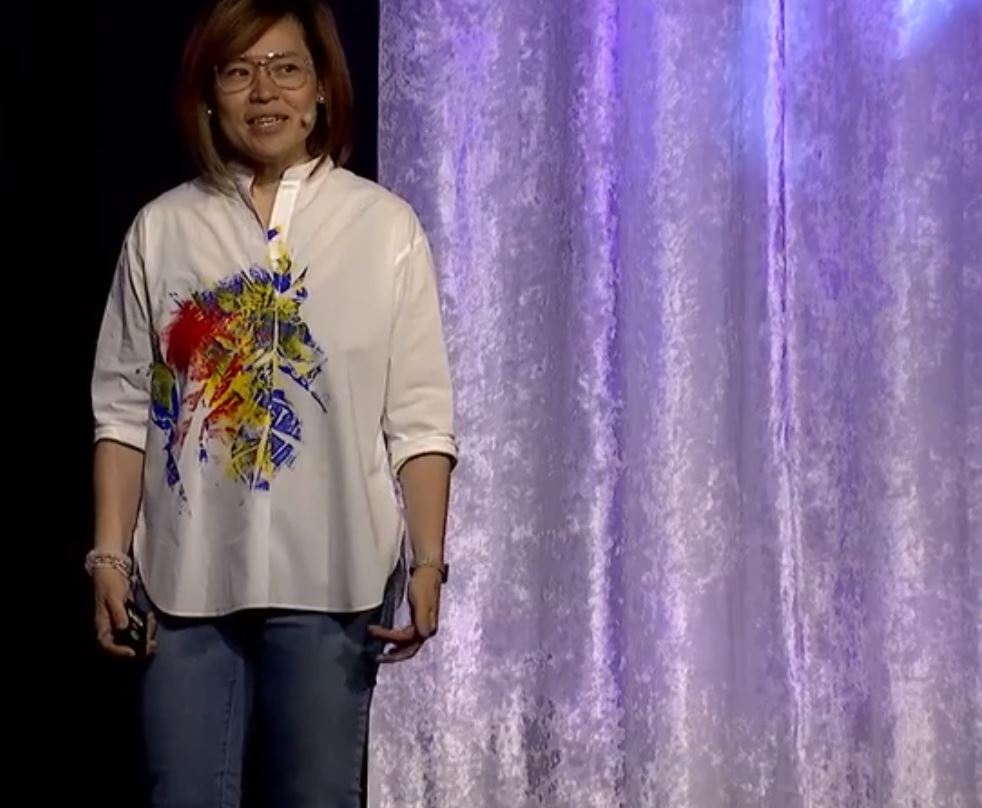Kai Tan’s Tips for True Downline Leadership: A Journey
Kai Tan, Young Living Diamond and speaker at our 2019 International Grand Convention, thinks about leadership in an unconventional way. In fact, during her convention presentation in July of this year, she didn’t talk about goal setting, strategy, business building, or any of the many topics people typically associate with leadership. She talked instead about a journey—one that starts in the head and ends in the heart—to true leadership. It is a path set by Gary, she said, and it’s one that can be much harder than the “traditional” path to leadership, if there is such a thing. But it is much more important. And Kai Tan’s not the only one that believes it.

What is that journey? How can a journey from one’s head to one’s heart be long enough to merit such a word? Shouldn’t it be more like a step? “We’re a culture that elevates head knowledge,” said Kai, “so we don’t have any words around emotions that move us to do things.” In our collective desire to understand the world around us, to seek “head knowledge,” we may not realize the importance of emotion, culture, or our choices in that culture. We may espouse excellence or honor or any number of positive values in our heads, but our expression of those values once we internalize them in our hearts often turns out messier or more negative.
The key to good leadership, then, is making the more vulnerable, difficult choice to confront problem situations or people and work together to find solutions, as Gary did. It means that you might find yourself in a situation where your team is enthused, but a particular member of it isn’t pulling her weight or owning her shortcomings, even when you try to help. It means she might even resent you afterward. It means you might get accused of misdeeds or even betrayed. It means trying to make the choice to “stay in one’s own lane” and continue with love instead of revenge.
“When you’re in the business of working with people, it gets messy,” she said. “If you’re trying to go on the journey [to good leadership] keeping your shirt clean, it’s not going to happen.” But when bad stuff happens, or people say bad things, what’s important is what you choose. When your heart is wide open, hurt even, what do you choose?

“Choose to be brave and to love in the face of fire,” Kai advised. “Vulnerability is the path back to each other.” Brené Brown, a research professor at the University of Houston and a popular author and TED talk speaker, agrees. The truly effective leader, according to her research, which she shares in her 2018 book Dare to Lead, is one who truly dares to embrace the vulnerability that comes with letting go of perfectionism, scarcity, cynicism, and avoidance, etc.
Vulnerability is the path back to each other.
Brown says, in fact, “When we find ourselves zigzagging—hiding out, pretending, avoiding, procrastinating, rationalizing, blaming, lying—we need to remind ourselves that running is a huge energy suck and probably way outside our values. At some point we have to turn toward vulnerability and make that call. We don’t avoid difficult conversations and situations; we lean into vulnerability when it’s necessary to do good work.”
But even more than that, daring leadership also means embracing shame’s antidotes: empathy, self-compassion, curiosity, and confidence, to name a few. Indeed, Brown, who has spent more than two decades researching shame, spends more than half of Dare to Lead exploring the specific ways in which those skills balance out our tendencies toward armored leadership, as well as commiserating with us and sharing strategies for going from armored to open.
Regarding empathy, for example, she says:
One of the signature mistakes with empathy is that we believe we can take our lenses off and look through the lenses of someone else. We can’t. Our lenses are soldered to who we are. What we can do, however, is honor people’s perspectives as truth even when they’re different from ours (p. 143). It’s only when diverse perspectives are included, respected, and valued that we can start to get a full picture of the world, who we serve, what they need, and how to successfully meet people where they are (p. 144).
That means that the open, daring leader realizes that and says to their downline: “I see you. I hear you. I don’t have all the answers, but I’m going to keep listening and asking questions.” It means actively asking and listening and then pursuing answers. Dr. Brown continues:
Developing a disciplined practice of rumbling with vulnerability gives leaders the strength and emotional stamina to dare greatly (p. 166). In tough conversations, hard meetings, and emotionally charged decision making, leaders need the grounded confidence to stay tethered to their values, respond rather than react emotionally, and operate from self-awareness, not self-protection. Having the rumbling skills to hold the tension and discomfort allows us to give care and attention to others, stay open and curious, and meet the challenges (p. 168). You have to have complete mastery of that skill, so you can focus on other things.
In team cultures where there may be a lot of change afoot, such as those caused by Young Living’s tremendous growth and that of the essential oil movement in general, curiosity is particularly important, Dr. Brown says. People in those situations tend to create a lot of “SFD’s.” These are Story First Drafts, or first drafts of stories “based on limited real data and plentiful imagined data, blended into a coherent, emotionally satisfying version of reality, called conspiracy theories.” They’re stories we tell ourselves about other people’s motives, their hearts, things we cannot actually hope to fully understand.

Photo by CongerDesign on Pixabay.
Moving to truer, more final “drafts” means asking oneself questions about what more one needs to know about a situation, what assumptions one is making, then answering them with curiosity about one’s self and others.
To those questions, Kai adds this all-important one: What do I want my team’s culture to be? Answering it is a matter of conscious choices every single moment. “Someone is the recipient of your choice—either directly or indirectly—all the time. You can create an empowering or disempowering culture; it’s your choice.”
What do I want my team’s culture to be?
The answers to all of these questions can provide an actionable plan to address problems and create truly empowering cultures, especially when leaders approach the questions with vulnerability, empathy, self-compassion, curiosity, and confidence. These, as it turns out, are the steps needed on the journey to one’s heart.
What are your tips for good downline leadership? Let us know in the comments below?
You can watch (or rewatch) her whole presentation here:


